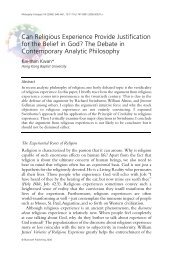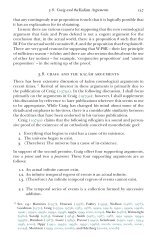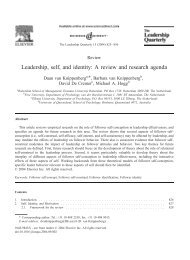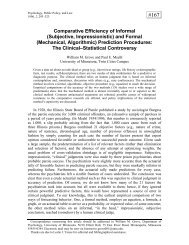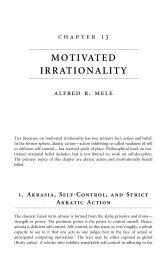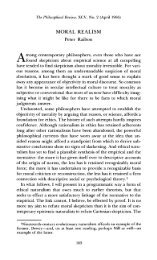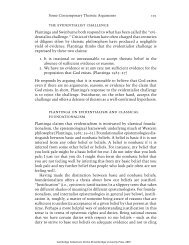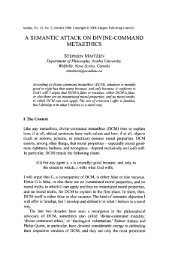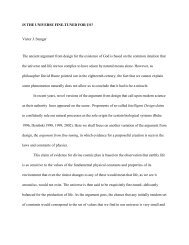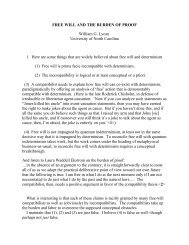Atheism and Theism JJ Haldane - Common Sense Atheism
Atheism and Theism JJ Haldane - Common Sense Atheism
Atheism and Theism JJ Haldane - Common Sense Atheism
You also want an ePaper? Increase the reach of your titles
YUMPU automatically turns print PDFs into web optimized ePapers that Google loves.
<strong>Atheism</strong> <strong>and</strong> <strong>Theism</strong> 129<br />
existence de dicto (the existence of the thing under the identifying description<br />
‘a stone’).<br />
Thus it is with the causal proofs of the existence of God. They aim to<br />
establish the existence of a Transcendent Cause of being, change <strong>and</strong> order <strong>and</strong><br />
so on, from its effects in the world. They do not claim to show more than<br />
what is implied by this. It is not in general an objection, therefore, to argue<br />
that they fail as theistic proofs in not demonstrating the existence of God<br />
as-He-is-conceived-of-by-Christian-doctrine, say. Oversimplifying, one might<br />
observe that they attempt to prove the thatness <strong>and</strong> not the whatness of<br />
God. Of course, if I can show that some cause exists, <strong>and</strong> if it is the case that<br />
this cause has the property F, then there is a sense in which I have proved<br />
the existence of an F. Admittedly, the fact that it is an F may fall outside the<br />
scope of my demonstration. Nonetheless, we can see that someone goes<br />
wrong if they claim that my conclusion is erroneous inasmuch as what it<br />
proves is other than what is the case. If I conclude that there is a blockage,<br />
what I infer is the case, even though I have not shown that the blockage is<br />
a stone.<br />
Moreover, it is not as if in demonstration quia one says nothing about<br />
what is shown to exist other than it exists. Indeed it is difficult to imagine<br />
what an argument of this bare sort might be like – one whose conclusion was<br />
simply ‘It exists’. The term ‘it’ usually serves as a pronoun referring back to<br />
some identifying name or description occurring earlier in the dialogue or<br />
narrative. At other times, however, it may occur as a pure demonstrative as<br />
when one asks in seemingly total ignorance ‘What is it?’ In this latter use one<br />
may not be able to provide some other identifying description, though it is<br />
arguable that a broad classification is presupposed by the circumstance in<br />
which the question is raised, <strong>and</strong> part of this might be made explicit by asking<br />
the speaker about its shape, colour, texture, movement, <strong>and</strong> so on. In the<br />
causal proofs there is something analogous to contextual presuppositions, for<br />
the conclusion ‘<strong>and</strong> it (or this) we call “God”’ is reached by way of considering<br />
certain events, states <strong>and</strong> other existents <strong>and</strong> asking about their causes.<br />
When the trail of dependency reaches a source we can then affirm of it – the<br />
originating cause – that it is an agent of this or that sort, the sort in question<br />
being specified initially by the observed effects.<br />
Reflection on the character of the effects may also allow us to underst<strong>and</strong><br />
more about the nature of the first cause. For example, if we reason that<br />
transitions require an ultimate source of change we may then see that this<br />
source cannot itself be subject to change <strong>and</strong> that its impassibility must go<br />
along with perfection <strong>and</strong> simplicity. If that which initiates change itself<br />
underwent modifications then it would fall within the scope of the question<br />
‘what causes this change?’ <strong>and</strong> thus would be just another case of that which<br />
it was our aim to explain. To this someone might respond that while a first



